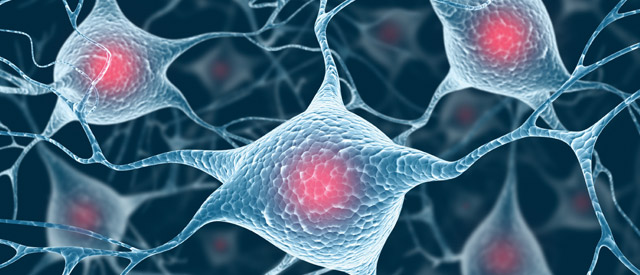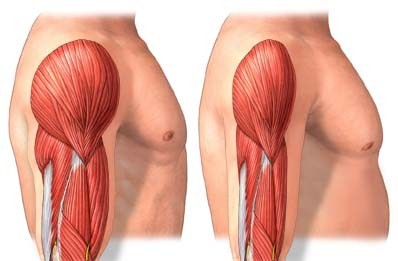International Cannabinoid Research Society’s (or ICRS) recent 25th annual symposium proved to be a great place to share ideas and learn from a wide variety of highly accomplished scientists in the area of cannabinoid research. The 4-day conference was highly diverse, covering everything from novel chemical cannabinoid entities, to quality control methods for cannabis, to non-THC cannabinoids such as CBD (cannabidiol) and CBG (cannabigerol).
Here are the 5 most promising studies that were highlighted. Remember, as with any scientific conference, it’s important to enter with an open mind to accept new ideas or to extend your understanding of previously held beliefs after critical evaluation. As the American writer Alvin Tofler once said:
“The illiterate of the twenty-first century will not be those that cannot read or write, but those that cannot learn, unlearn and relearn.”
1. Your Endocannabinoid System Could Impact Your Metabolic Health
Dr. George Kunos’ research group out of the NIH/ Section of Neuroendocrinology presented some of their findings on a dual-target CB1r (cannabinoid type 1 receptor) antagonist that was also capable of affecting other receptors involved in liver fibrosis and inflammation. Liver dysfunction often stems from an interplay between alcoholic liver disease, viral infection, and type 2 diabetes/obesity/metabolic syndrome (fatty liver). The research group synthesized a bevy of compounds that essentially perform functional benefits concerning fat loss, improved blood sugar metabolism, and fatty liver, with far less penetration into the brain tissues. These compounds inhibit the action of CB1 receptors strictly in the periphery (liver, fat, muscle), while sparing adverse effects on brain/behavior.
While still in early stage development, the compounds offer hope and open the door to possibilities that naturally occurring compounds may be capable of influencing the endocannabinoid system to improve obesity, metabolic syndrome, abdominal/visceral fat, and carbohydrate intolerance. In other words, we may be able to restore some of that seemingly unstoppable metabolism of our youth that allowed us to eat more liberally while staying “lean and svelte.”
2. Different Cannabis Compounds May Affect CB1 Receptors Differently

D. Lu, HI Ali, et al. from Texas A&M and UConn discussed a new technique of studying and characterizing compounds within cannabis (and beyond) that may affect the CB1 receptor differently than THC. THC is known as an orthosteric agonist or ligand of CB1, meaning THC is the “key” that fits squarely into the CB1 receptor site, or “lock.” However, allosteric ligands are compounds that can bind to the receptor at an alternate site, or locations away from the main “keyhole” to affect the intensity, duration, or character of the biological effect downstream of that receptor.
In other words, using these allosteric sites of receptors instead of orthosteric (traditional docking sites) allow for more nuanced responses that emphasize some effects (e.g., anti-inflammatory, anti-pain, etc.), while avoiding other adverse, side effects (e.g., psychoactivity, anxiety, paranoia, etc.).
3. CBD May Have Anti-Psychotic Properties
Schizophrenia is a psychiatric disorder characterized by delusions, hallucinations, confusion, and disorganized thinking. Common pharmaceutical treatment for schizophrenia involves the use of drugs that target dopamine receptors. While THC is the major cannabinoid responsible for some of the adverse effects of marijuana-induced anxiety, paranoia, and hallucinations, CBD has emerged as having good therapeutic potential in these areas. J. Renard, J. Loureiro, et al from the University of Western Ontario presented novel findings that further support the anti-psychotic properties of CBD, including some of the underlying, molecular signaling mechanisms within specific parts of the brain.
4. CBD Could Also Prove Beneficial for Various Neurodegenerative Disorders
C.E. Herron et al. from University College of Dublin, Ireland explored CBD, the non-psychoactive constituent of cannabis, as a potential therapeutic agent for a number of neurodegenerative disorders, including Alzheimer’s dementia. CBD exerts anti-inflammatory and neuroprotective effects on the toxic beta-amyloid plaques and tau proteins cultured brain cells. This new data was carried over into an animal model, showing that CBD pre-treatment was able to protect and restore the long-term potentiation deficits (LTP) critical to memory function within the hippocampus of the brain. These positive effects were observed despite no change in tau protein or beta-amyloid oligomerization.
5. CBG May Minimize Muscle Loss from Various Diseases

D.I. Brierley et al. from University of Reading, Berkshire, UK presented interesting data on how CBG (cannabigerol) was able to mitigate the muscle wasting typical of cancer anorexia-cachexia syndrome that occurs with up to 80% of advanced cancer patients. This co-morbidity not only diminishes quality of life and treatment response, but also increases mortality.
A considerable body of evidence has emerged showing both cancer and chemotherapy induces progressive muscle loss via systemic inflammation, metabolic dysfunction, and cytotoxic effects of chemotherapy itself. This recent data showed that CBG oral administration in rats treated with cisplatin chemotherapy not only increased feeding behavior, but also partially reversed the bodyweight and muscle mass loss caused by the cisplatin. The ever-important type IIA and IIx muscle fibers (known to be the ones most responsive to loaded exercise that have both high force capacity, growth potential, and fatigue resistance) appeared to be relatively spared in the CBG treatment group.
Further work is necessary to dive into the underlying mechanisms of this protective effect. It could be affecting the pathways that control muscle protein synthesis/anabolism, or protein breakdown/catabolism…or both!
Original Sponsored Article from Leafly!


